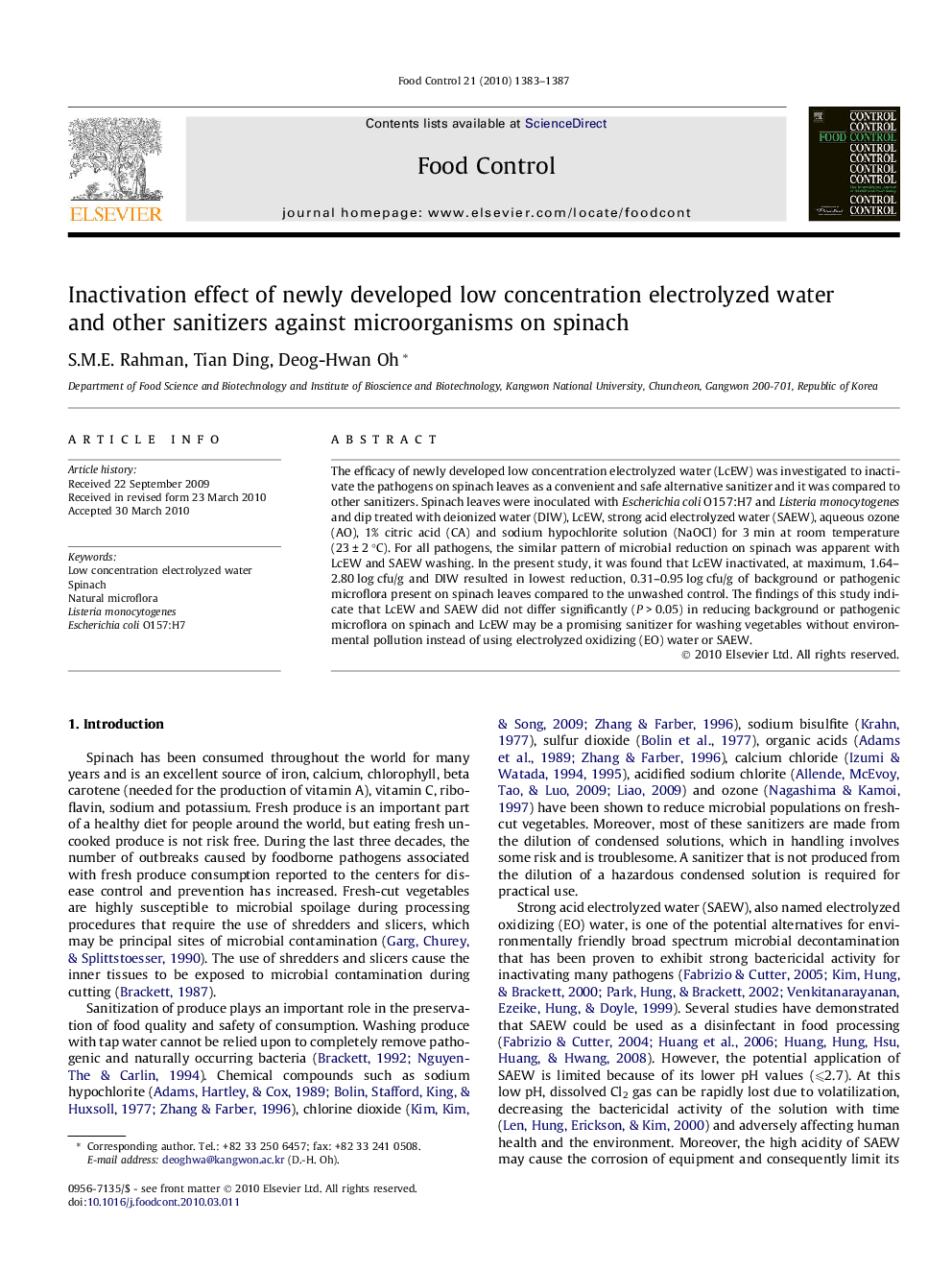| Article ID | Journal | Published Year | Pages | File Type |
|---|---|---|---|---|
| 4559878 | Food Control | 2010 | 5 Pages |
The efficacy of newly developed low concentration electrolyzed water (LcEW) was investigated to inactivate the pathogens on spinach leaves as a convenient and safe alternative sanitizer and it was compared to other sanitizers. Spinach leaves were inoculated with Escherichia coli O157:H7 and Listeria monocytogenes and dip treated with deionized water (DIW), LcEW, strong acid electrolyzed water (SAEW), aqueous ozone (AO), 1% citric acid (CA) and sodium hypochlorite solution (NaOCl) for 3 min at room temperature (23 ± 2 °C). For all pathogens, the similar pattern of microbial reduction on spinach was apparent with LcEW and SAEW washing. In the present study, it was found that LcEW inactivated, at maximum, 1.64–2.80 log cfu/g and DIW resulted in lowest reduction, 0.31–0.95 log cfu/g of background or pathogenic microflora present on spinach leaves compared to the unwashed control. The findings of this study indicate that LcEW and SAEW did not differ significantly (P > 0.05) in reducing background or pathogenic microflora on spinach and LcEW may be a promising sanitizer for washing vegetables without environmental pollution instead of using electrolyzed oxidizing (EO) water or SAEW.
